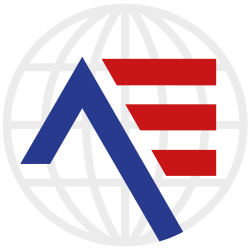Finding the right needles for your industrial sewing machine can be difficult. It becomes especially difficult when you realise that there are different needles for different applications! If you purchased your industrial sewing machine from us then we will have left a handy card in the drawer telling you which needles you need ready for when you run out! If you have lost this card or purchased the machine elsewhere, then this quick guide should help to point you in the right direction!
Industrial sewing machine needles can vary in size, length, type, needle point and more.

Needle Brands
We stock both Schmetz and Groz-Beckert needles. Which one you go for is generally a matter of preference, we only stock trusted brands which we know will serve our customers well! Groz-Beckert needles tend to be cheaper, but Schmetz have a reputation for quality. If you are looking for an extra-strong needle then Groz-Beckert have a “gold point” (Gebedur) option for their needles. These have a titanium nitride coating which makes them more hardwearing.
Needle System
Looking at a needle packet, you will see a series of numbers and letters which can seem random and confusing to start with! The first step to finding the type of needles you need from this is identifying the needle system. Each industrial sewing machine is compatible with a specific type of needle, this is the machine’s needle system. It is important to ensure you are using the correct needle system for your machine. The needle system governs the needle’s length and is usually defined by physical attributes of the needle, such as length, thickness, etc.
It will appear as a group of numbers and/or letters on your packet, such as “135 X 17”, “134R” or “134-35”. If you can’t figure out which type you need, you can contact our team directly and we will be happy to help you find the right ones!
Needle Points
The needle point specification describes the tip of the needle. There are many different needle points available, and these determine the appearance of the hole in the material and the stitch produced. There are many different needle points within each needle system.
For example, if your walking foot sewing machine normally uses 135x17 needles and you change the material you were using, you may also have to change the needle point. These needles are fine for sewing most materials but when it comes to sewing a specialist material like leather, you would find that the needle will make large, untidy holes in the material. This is because you need to use a specially designed leather point needle.
We supply many different needle points to help you find the correct needles, whatever your application! Here is a list of just a few of the many different needle points that we supply and their applications:
Regular/universal (Round) Point - Standard lockstitch needles, used to sew a variety of light to medium fabrics for general sewing.
Light Ball Point - Used to sew woven/knit fabrics in products such as t-shirts.
Medium Ball Point - Used to sew loose woven/elastic products such as sweatshirts and underwear.
Heavy Ball Point - Used to sew coarse, open-structured fabric (thick sweatshirts, cardigans, etc.)
Sharp Point - Sews fine, woven fabrics for products such as blouses, trousers, and thin curtains.
Leather Point - Used to sew a wide variety of leather products.
Needle Size
A needle’s size is determined by the thickness rather than the length. The larger the needle size, the thicker and stronger the needle will be. The needle size required corresponds to the thickness of the material you are sewing with and the size of thread you are using. Thicker needles tend to be used for thicker fabrics, and thinner needles for thinner fabrics. A larger needle size will make a larger hole in the material being sewn and therefore accommodates a larger thread size.
Each model of sewing machine has a range of needle sizes that it is compatible with. This means you can use the model number as a guide to help you narrow down the search for the right needles, but you will also need to know how it has been set up. Industrial sewing machines will be set up for a certain needle size before they are used. It is important to use needles which are the correct size for your machine set up, although you can go up or down one needle size without compromising the timing on the machine. If you were to change it by more than this then it is likely that the timing will be knocked out and result in a dramatic dip in the stitch quality. It also often leads to needle breakage and can result in a technician being required to repair the machine.
The size of the needle will usually appear on your packet in both the metric and Singer/US system. For example, “size 100/16”.
The metric sizing system is numbered from size 35- size 250 and corresponds to the diameter of the needle in hundredths of a millimetre. Size 100 is one millimetre thick,
The Singer/US sizing system is numbered from 6 to 28.


We hope that this article has given you some extra knowledge on industrial sewing machine needles and how they work. If there is anything else that you'd like to know, or if you are struggling to find the correct needles for your machine, contact us at info@ae-sewingmachines.co.uk and we will answer any questions that you may have. Alternatively, if you're in need of industrial sewing machine needles, visit the needle page of where you can order them to be delivered directly to your door with quick turnaround times!










